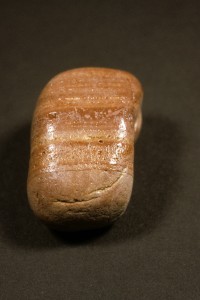Since I was in love with photography, I wanted everyone else to be as well (nothing like the fervor of the converted.) So,I decided to teach small group photography classes in my living room.
Right away, it was clear to me that I raced through the part about f-stops and dove into explorations about light, the energetic nature of matter, and the spiritual elements of photography. After listening to me for one lesson, an adult student approached me and said she thought her son should study with me.
Billy was learning disabled, though in those days there was no label for that. Frustrated by school and in need of a success experience, Billy would “get’ the right-brained way I taught photography. Would I give him lessons?
I had another close friend with a daughter Mary, who was also having learning problems. So for $5 an hour, I worked with the two of them every week for 1 ½ years. As a former classroom teacher, I had already formed a strong curiosity about why certain kids weren’t learning. Now I was studying all I could find about the new discoveries about the right and left brain. I felt I was being led on a treasure hunt.
The exercises I designed for Billy and Mary became the basis of curricula I would design and teach in both public and private schools. As an artist-in-residence for the South Pasadena, CA school district, I had the privilege of doing a photography project with 60 5th graders. It was called “Seen one Rock, Seen ‘Em All,”( a brazen slam at Ronald Reagan, who had made that comment about national parks.)
I gave each student a rock, and led them through a guided imagery exercise where they allowed their active imagination to play with the inner picture of that rock, allowing it to become part of a larger scene and story. I had them draw the scene and write the story.
Now the fun began. Their next challenge was to figure out how to make a photograph of that drawing, using the rock and other objects. “That’s not fair!” some of them began to protest. “You didn’t tell us we’d have to make this into a photograph! I wouldn’t have thought of something this complicated if I had known!” said one.
The student, Jack, showed me a drawing of a rock that had become an island surrounded by water, topped with trees, and blown by a strong wind causing big waves. “How am I going to do this?” he said as if it were obviously impossible.
It was a class in problem-solving, so I hinted that he might think of movie sets and dioramas. I teamed the kids up and gave them a week until the day we’d set up a simple photo studio and make the photographs, which they would then print themselves later in the studio I had now rented.
The photo above is an example of the student work, which became a school exhibit. Anna “saw’ her rock (at the top of this article) ‘turn into” her ballet slipper, well-worn from all her attempts to make it into a toe shoe, successfully poised on top of the rock it resembled. The hardness of the rock matched her hard work. The beauty of the shape matched the beauty she captured in her treasured slipper. Beautiful, I thought, and a deep message about how important dance was to Anna.
As for Jack, I couldn’t wait to see how my biggest protester would solve his problem. And so I grinned proudly when, on the day of our shoot, he walked in with his partner, holding a plastic tub he would fill with water, tiny trees he’d made of paper, and a hair dryer.
Seen one rock, seen ’em all? Sorry, Reagan. I don’t see them that way. And neither do kids, who can see more than we think, when we give them a chance to keep their imaginations alive.


